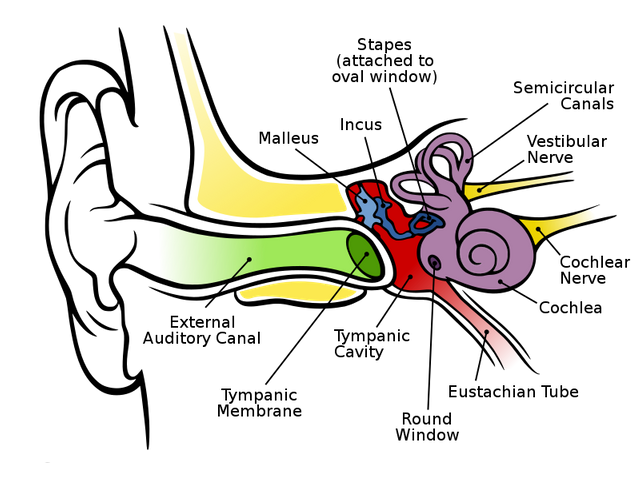Human Ear Body Parts Anatomy Closeup Foto stock 675556255 Biology Diagrams
Human Ear Body Parts Anatomy Closeup Foto stock 675556255 Biology Diagrams Structure and Anatomy. The ear is anatomically divided into three main regions: the external ear, middle ear, Stapes (Stirrup): The smallest bone in the human body, which connects to the oval window of the cochlea in the inner ear. Eustachian Tube: A narrow tube that connects the middle ear to the nasopharynx (upper throat). [7]

The human ear is the organ of hearing and equilibrium. It detects and analyzes sound by the mechanism of transduction, which is the process of converting sound waves into electrochemical impulses. Audition cannot take place adequately if the anatomy is abnormal. This article will discuss the mechanisms implied in the conduction of sound waves into the ear, and its integration and transmission

Ear Structure Revealed: Comprehensive Guide Biology Diagrams
The ear is a group of sensory organs in the head that collaborate to produce the sense of hearing. Together these organs perform the amazing function of converting sound waves in air into electrical signals to transmit to the brain. The ear also contains several special structures that produce the body's sense of equilibrium, or balance.

Overview of Ear Anatomy. The human Ear does two main jobs: it helps us hear and keeps us balanced. It works by turning sound waves into signals our brains can understand. The nerve helps our body understand where our head is about our body, which is important for keeping our balance and making sure our vision stays steady when we move. Oval

Wikipedia Biology Diagrams
Human ear - Anatomy, Hearing, Balance: The most-striking differences between the human ear and the ears of other mammals are in the structure of the outermost part, the auricle. In humans the auricle is an almost rudimentary, usually immobile shell that lies close to the side of the head. It consists of a thin plate of yellow elastic cartilage covered by closely adherent skin. Discover the intricate ear structure, including outer, middle, and inner ear anatomy, auditory system functions, and related hearing mechanisms, in this comprehensive guide to understanding human ear complexity and auditory processing. The ossicles are the smallest bones in the human body and are connected by ligaments and muscles. They Human Ear Anatomy. The human ear is a complex sensory organ responsible for hearing and maintaining balance. It is anatomically divided into three parts: the outer ear, middle ear, and inner ear. Outer Ear. The outer ear consists of the visible portion called the auricle or pinna, which projects from the side of the head, and the short external

How sounds make their way from the source to the human brain. In vertebrates, an ear is the organ that enables hearing and (in mammals) body balance using the vestibular system.In humans, the ear is described as having three parts: the outer ear, the middle ear and the inner ear.The outer ear consists of the auricle and the ear canal.Since the outer ear is the only visible portion of the ear
